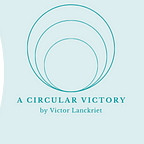Data as a Commodity in the Circular Economy
Hi everyone and welcome back to the 12th blog post of A Circular Victory! Last week we talked about creating the right ecosystem for the Circular Economy. This will include many different areas of course, but I discussed the two that I think will be the most important in the next few years. These areas were finance and academics.
When financial institutions recognize the importance of Circularity, their investments will accelerate the development tremendously. Academics, on the other hand, help to build the basis of a Circular Economy. They develop the strategic and high-level ideas that the Circular Economy is based on, as well as researching how we can make manufacturing more Circular and take back management more feasible, for example. Read more about this in the 11th blog post!
Today, we are going to talk about one of the most valuable commodities of the 21st century: data.
Data and the Circular Economy
Data has become increasingly available to everyone. At no point in history has it been so easy to capture data. We can now gather data about usage of products, air quality, our online presence… In short, we can now gather data about almost anything in the world. The ubiquity and importance of data has made it an increasingly valuable commodity in the economy. This is no different for the Circular Economy.
The first use of data in the Circular Economy is largely the same as it is in any other circumstance. The increasing access to data allows us to locate the issues more effectively. Once we have found an issue, data can also help us to find solutions. When we start solving the problem, data can help us track the progress we are making towards solving that problem. This is the basis of how data can be used. We will now look at a few specific examples of how data collection and analysis can be used in the Circular Economy.
Product Passports
The first use of data for the Circular Economy are product passports. A product passport essentially tracks a product throughout its entire lifecycle. It will track each step of the supply chain and what happens to the product at each step. Because all of this data is saved and connected to the product, it greatly improves business-to-business information on what materials a product contains and what processes it has gone through. This greater access to information will encourage easier disassembly and reuse of materials in products.
Product as a Service
The second example of Circularity that relies on increasing data availability is the Product as a Service business model. For this model to work, most of these services will move to a Pay per Use model. This means that companies need to find a way to track usage of the product. Of course, the best way to do this is by collecting usage data.
We are already seeing examples of Pay per Use models in our everyday lives. If you live in a big city, you have probably noticed the increasing presence of rental bikes and scooters that can be unlocked with your phone. Once you unlock the vehicle, they start tracking how much time you are using the vehicle for. At the end of the trip, you pay for the amount of time you used the product/service.
This type of business model is becoming more and more popular in both the B2B and B2C space. This business model cannot function without the collection and processing of data.
Where are you seeing sustainable data usage?
These two examples are just a few of very, very many examples of data being used to support Circular or sustainable efforts. Are there any other examples that you have seen or experienced? I would love to hear your stories. You can send your stories to me to acircularvictory@gmail.com or on my LinkedIn at Victor Lanckriet.
